I am seeing more companies that want to migrate to Microsoft 365 (Business or Enterprise). During preliminary discussions, clients are concerned about what they should do with existing emails during and after Microsoft 365 implementation. The answer is quite simple: you should clean your mailbox from unnecessary emails and then, import all emails in Exchange Online.
Let’s see how this can be done:
Let’s just say that you are IT administrator for a company, or responsible to managing company email solution. Also, you decide to migrate from an old environment to Microsoft 365. Why? Mainly because, thanks to GDPR, you have no other choice but to be in control on how employees are working with files that has customer data and Microsoft 365 is giving you an excellent solution to fulfill GDPR IT requirements. Of course, customer’s data are also in emails.
Probably the easiest way to control business files usage, is to have all data in Microsoft 365 environment. Files from local infrastructure are quite easy to be migrated to OneDrive for Business or SharePoint. Emails however are a different story.
In this article I will focus on how to migrate emails from local pst files to Exchange Online.
Prerequisites:
- Have a Microsoft 365 or Office 365 subscription
- Have Azure AZCopy installed on your computer
- Have the possibility to collect all pst files to an accessible location
- Know which pst file goes in which user’s mailbox
Emails exists typically in two locations: on the server and in local files like pst files (or other offline type of files).
How to import emails stored on your existing email server?
You have several options:
- Use migration tool from Exchange admin center

- Use third-party solution like SkyKick (www.skykick.com) or BitTitan (www.bittitan.com) – picture below:

Personally, I prefer to use third-party tools for several reasons, but I will go into details some other time.
How can you import emails stored on local pst files?
Well, Microsoft added a tool in Office 365 specific for helping you to import email from pst files.
Let’s see how it works.
To be able to use this tool you need to be assigned the Mailbox Export role in Exchange Online. So, let’s do this:
- Go to www.office.com and press admin tile
- In admin centers click on Exchange
- Click on admin roles
- Click on + sign
-
Add Name for this role and assign users in charge with creating jobs for importing emails.
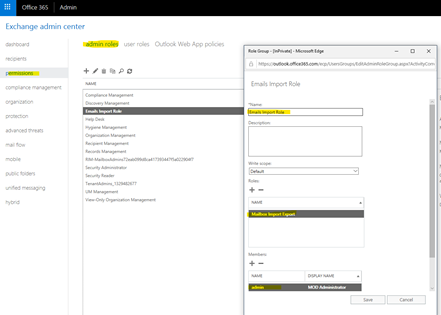
Now, you need to wait. It can take up to 24 hours until this changed will be applies and to be able to create jobs.
Now, go to Security and Compliance center (found in Admin centers section). Alternatively, you can go directly to https://protection.office.com . Here, click on Data governance and choose Import.

I have added below the menu available before and after the Emails Import role has been configured.
| Before: |
After (as you can see you will have a new button New Import Job: |
 |
|
- Now press on New import job
- Enter the name for your job (no CAPS allowed – I hope this will be allowed in the future) and press Next

- Depending on how many data you want to import you have two possibility. Let’s select Upload your data
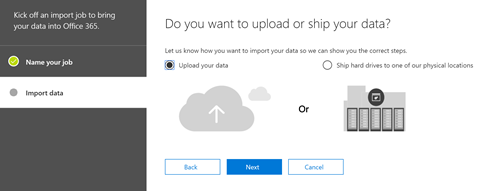
- Press on Show network upload SAS URL

- Copy SAS URL to clipboard. You will need it for copying your pst files to it when using Azure AZCopy
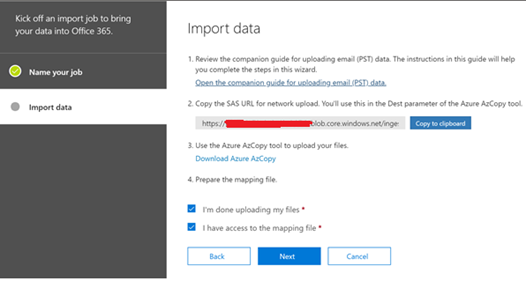
-
Open Command Prompt and run Azure AZCopy. When finished you should see a transfer summary. Check that the number of successful files transferred is equal with number of pst files you want to import and there are no failed transfer files.
AzCopy.exe /Source:<Location of PST files> /Dest:<SAS URL> /V:<Log file location> /Y

If you want to check that you pst files has been imported in Azure storage, you can use Azure Storage Explorer tool. You can use it for viewing only not for importing!

- Now, we need to “tell” Microsoft which pst file map with what Microsoft 365 user. To do this, we will use, of course, a csv file. So, coming back to Microsoft 365 tenant windows, select checkboxes from step 4 (see below). Press Next.

-
Select mapping file (csv file) and press Validate. Process will not go forward until validation completes.

Header for pst file is below:

- After validation press Save.
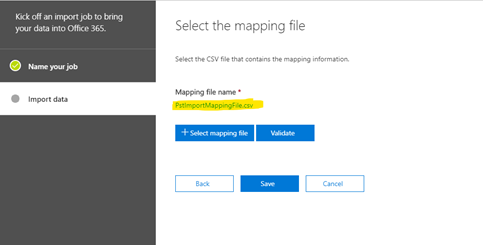
- Close
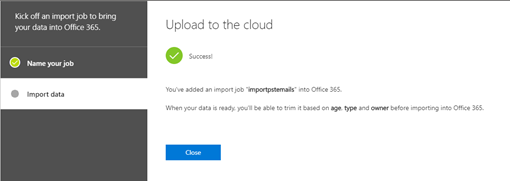
- If everything works well, you should see Ready to import to Office 365 message in progress bar.

- Press Ready to import to Office 365.

- Press Import to Office 365.
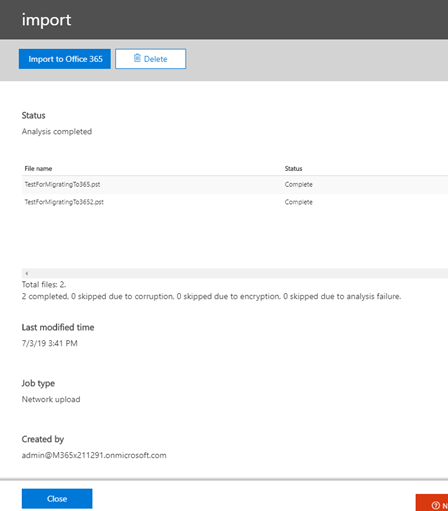
- You have the possibility to filter data that you want to import. Let’s say that we want to import everything. Select No, I want to import everything and press Next.
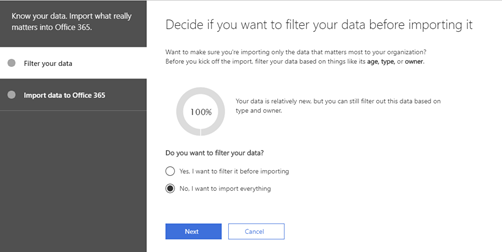
- After analyzing pst and csv file press Import data
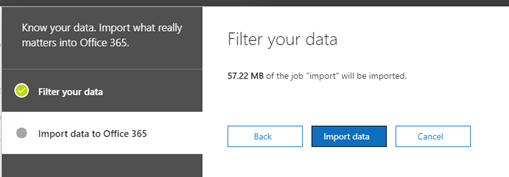
- After migration press. Close.

- If you want to go into details on emails imported select job and look in details. You will see items imported, skipped etc.
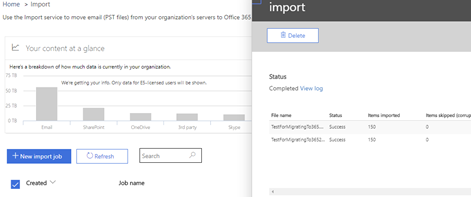
I hope this process helps you to have a successful migration to Microsoft 365.

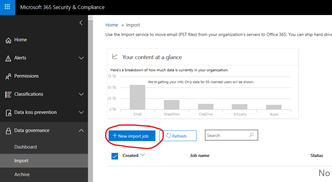
Recent Comments